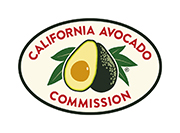Best Practices for California Avocado Groves Impacted by Excessive Heat
Dr. Ben Faber shared a recent blog post on how growers can alleviate the damage caused by the excessive temperatures.
To begin with, assess the damage to your trees. If your trees have been lightly “toasted,” it’s best to leave the trees alone. While the terminal buds may have been damaged — and will most likely not flower next spring — flowering should be sufficient enough to provide a decent crop in the following year. The impact on the flowering will be proportionate to the amount of “toasting” (browned leaves) you see on your trees.
If trees have lost significant portions of leaf canopy, it is important to take action as trees will be susceptible to damage caused by sunburn. Dr. Faber reminds growers that leaves act as the tree’s “radiator” — moving water through the tree to disperse heat that accumulates in branches and stems. When trees lose a significant portion of their leaves, the tree cannot sufficiently cool its self, the bark heats up and tissue is damaged. In addition, the tree can easily be sunburned.
To prevent damage caused by excessive heat, Dr. Faber recommends the following:
- As soon as possible, whitewash branches exposed to the sun with special attention paid to branches on the west and south sides of the tree.
- Trees that lose a significant portion of leaves cannot efficiently move water, therefore restrict irrigation amounts to ensure you avoid creating wet, soggy conditions that can lead to root rot. It’s best to irrigate less frequently and with smaller amounts of water.
- Do not prune your trees — leave hanging leaves in place to protect the tree from sunburn. Once new tree growth has occurred (in the next 3 – 6 months), pruning can take place on living wood.
- Adjust fertilization as you would with a frost-damaged tree: reducing the amount of fertilizer until the tree is re-established. If you see signs of a particular nutrient deficiency, adjust fertilization accordingly.
For growers interested in reading more detailed instructions from Dr. Faber, we encourage you to read his entire blog post.
For growers who have been impacted by the excessive temperatures, it is important you contact your crop insurance agent within 72 hours of the event to determine fruit loss and secure applicable coverage.


